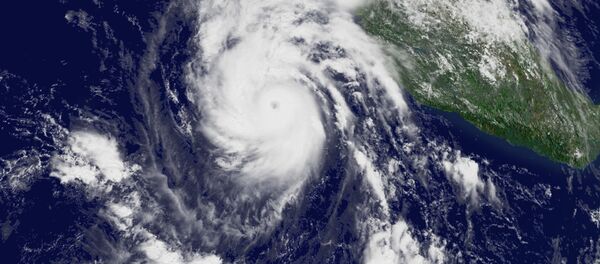Scientists in the US have developed a method that will allow them to know when a earthquake is about to strike before it even happens.
The reserach, titled Machine Learning predicts laboratory earthquakes, was published in the Geophysical Research Letters, and describes a method that relies on listening for acoustic signals from a laboratory simulation of failing fault lines.
ICYMI: Machine-learning #earthquake prediction in lab shows promise | #MachineLearning #science #technology | https://t.co/nZUuE1OGZ7 pic.twitter.com/I9kVETvffN
— Los Alamos Lab (@LosAlamosNatLab) September 1, 2017
Paper co-author and researcher at Los Alamos National Laboratory, Dr. Bertrand Rouet-Leduc, said that the prediction system depends on spotting a specific wave pattern that is emitted whenever the fault fails.
The system works by applying stress to two heavy steel blocks, this causes them to slip and slide over one another like tectonic plates during an earthquake. This movement then releases energy in the form of seismic waves, which can then be studied acoustically.
Researchers at Los Alamos National Laboratory are working with machines that may make future prediction of earthquak…https://t.co/WZgzsD9utU
— SEOware Solution (@seowaresolution) 1 September 2017
Bertrand Rouet-LeDuc, co-author of the paper and a researcher at Los Alamos National Laboratory in New Mexico, US, said the prediction system relies on spotting a specific wave pattern that is emitted whenever the fault fails.
"There is lots of controversy regarding whether the prediction of earthquakes is actually possible, or if they are random in nature and will never be predicted. The fact that we find a new signal that makes it possible to predict failure for a miniature fault in the lab gives us hope that it is in fact possible," Dr. Rouet-Leduc said.
The system relies on a series of decision-tree algorithms. The tests have been broken down into two 150-second intervals.
The seismic data generated from the first half is used for training and information about the sound emitted by the laboratory fault, and the remaining time before the failure is given.
During the second half, the system is given the sound waves coming from the fault and then has to estimate the time before the fault fails. The researchers repeated the training and testing stage for fifteen cycles.
"During the training stage, the machine learning algorithm learns to recognize a pattern in the sound coming from the fault that tells how much stress it is under, and how close it is to failing. In the testing stage, it turns out that even when the fault seems to behave differently (for example the recurrence time between events is different), its sound emission still follows the same predictable pattern," Dr. Rouet-Leduc explained to The Register.
The scientists tested the machine by conducting a simulated quake. They found that the system was able to guess the time for when the next tremor will happen, and it is accurate to within 10 percent. According to the scientists, when the earthquake simulator is just about to fail, the algorithm is correct to within 2.5 percent.
"For example, for cycles that last 10 seconds on average, 2 seconds before failure the algorithm makes predictions of between [approximately] 1.9 seconds and 2.1 seconds," Dr. Rouet-Leduc said.
Methodology Issue
However, there is an issue with the current methodology. The scientists claim that although the laboratory earthquakes provide good simulations, it's a very simplistic model.
Using real seismic data is also difficult, as there is ambient noise produced by human activity and the surrounding environment.
In addition to this, sounds from nearby faults also interfere with the signal pattern, which makes it harder to make predictions.
The scientist have started to work with real life data, however they are currently trying to figure out how to isolate the correct signal in order to know when a earthquake is about to happen.
"The novelty of our work is the use of machine learning to discover and understand new physics of failure, through examination of the recorded auditory signal from the experimental setup," Paul Johnson, co-author of the paper and a researcher at Los Alamos National Laboratory, said in a recent interview.
"I think the future of earthquake physics will rely heavily on machine learning to process massive amounts of raw seismic data," Mr. Johnson added.






